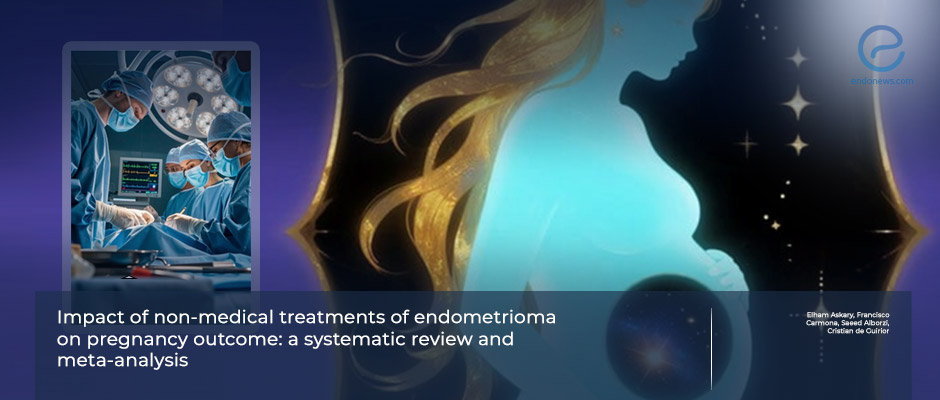Comparing Non-Medical Endometrioma Treatments: Fertility Impact
Oct 1, 2025
Cystectomy and Ablation Yield Comparable Pregnancy Rates, While Coagulation May Harm Fertility
Key Points
Highlights:
- Cystectomy and ablation show similar pregnancy rates in both ART and natural conception, but sclerotherapy appears to be safe only in selected patients.
- Coagulation and fenestration are associated with lower pregnancy success and higher recurrence.
Importance:
- Ovarian endometriomas are common and strongly linked to infertility. The evidence-based insights to guide fertility-preserving treatment decisions are important.
What’s Done Here:
- This is a systematic review and meta-analysis of 24 prospective studies (2000–2022) including 2,458 infertile women (ages 15–45) with ovarian endometrioma.
- Outcomes of cystectomy, ablation, sclerotherapy, coagulation, or no treatment were compared.
- Fertility outcomes measured by clinical pregnancy rate (natural and ART); recurrence rates were also evaluated.
Key Results:
- For Cystectomy, overall pregnancy rate 39.8%; natural pregnancy 40.2%; ART pregnancy 39.3%.
- For Ablation: Overall pregnancy rate 38.2%; natural pregnancy 34.1%; ART pregnancy 42.9%.
- For Sclerotherapy: Overall pregnancy rate ~42%; acceptable fertility outcomes, but with heterogeneous protocols and higher recurrence risk.
- For Coagulation: Lowest natural pregnancy rate (15.5%) and highest recurrence (up to 38.8%).
- Recurrence Rates: 18.1% after cystectomy, 23% after ablation, 38.8% after coagulation.
Limitations:
- Significant heterogeneity across studies in protocols, surgical techniques, and follow-up duration; small sample sizes in some groups (coagulation, no-treatment) which reduced statistical power; limited data on concomitant infertility factors (e.g., adenomyosis, male factor infertility) and the need for well-designed RCTs with standardized outcomes to strengthen conclusions are the main limitations.
Lay Summary
Endometriomas affect up to 44% of women with the disease and are closely linked to infertility.
Choosing the right treatment is important, because different surgical techniques can impact both the chances of pregnancy and the risk of cysts coming back.
In this large study, published in Reproductive BioMedicine Online, researchers from Iran and Spain analyzed data from 24 prospective studies including 2,458 women with infertility and endometriomas.
They compared several non-medical treatment options: cystectomy (surgical removal of the cyst wall), ablation (destroying the cyst lining while preserving more ovarian tissue), sclerotherapy (injecting agents to shrink the cyst), coagulation, fenestration, and no treatment.
The results showed that cystectomy and ablation led to very similar pregnancy rates for both natural conception and assisted reproduction.
Sclerotherapy also produced reasonable pregnancy outcomes and may be an option for selected women, although recurrence rates were higher.
In contrast, coagulation and fenestration were associated with poorer fertility outcomes and a higher likelihood of recurrence, suggesting they may not be suitable when pregnancy is the goal.
This analysis highlights that there is no one-size-fits-all solution. Treatment choice should be individualized, balancing factors like ovarian reserve, recurrence risk, and the woman’s reproductive plans. While more large, high-quality trials are needed, the findings help doctors and patients make better-informed decisions about how to manage endometriomas when fertility is a priority.

